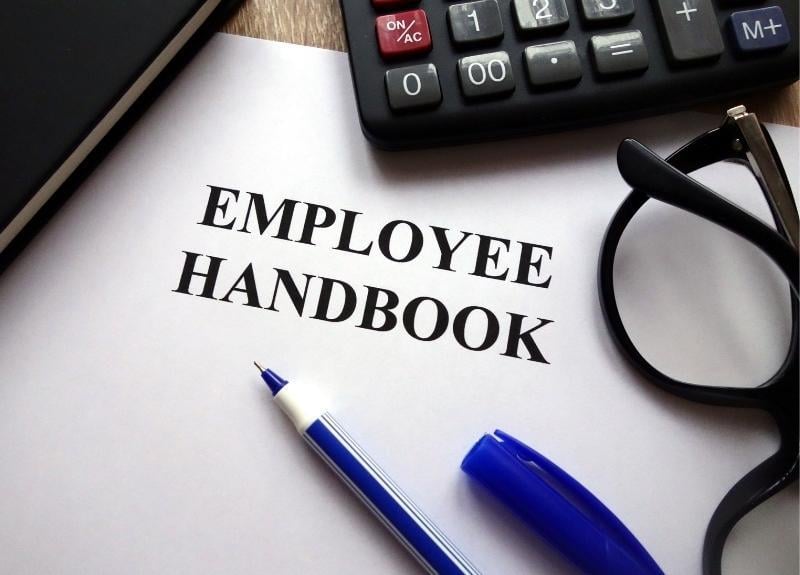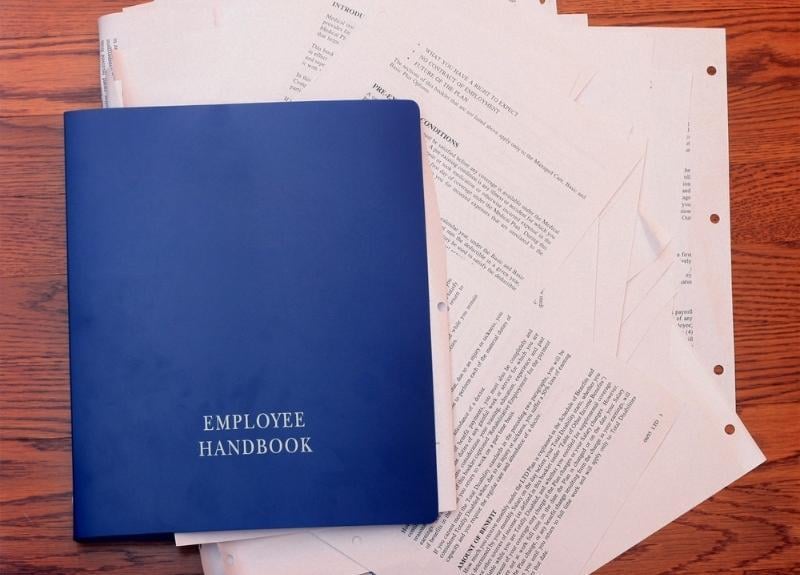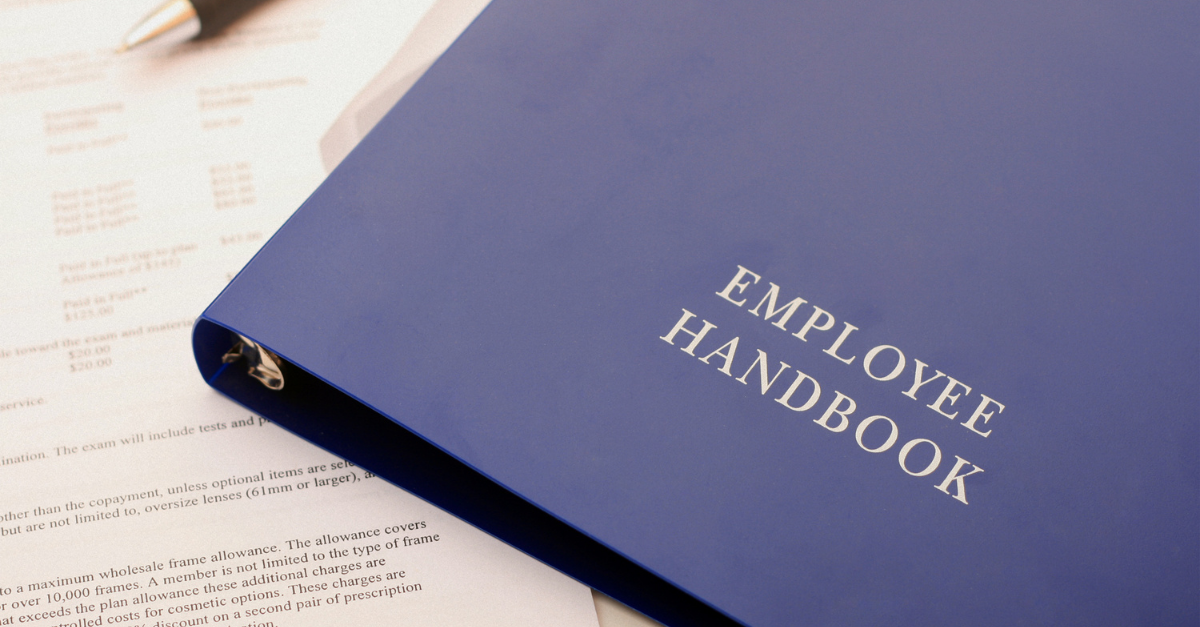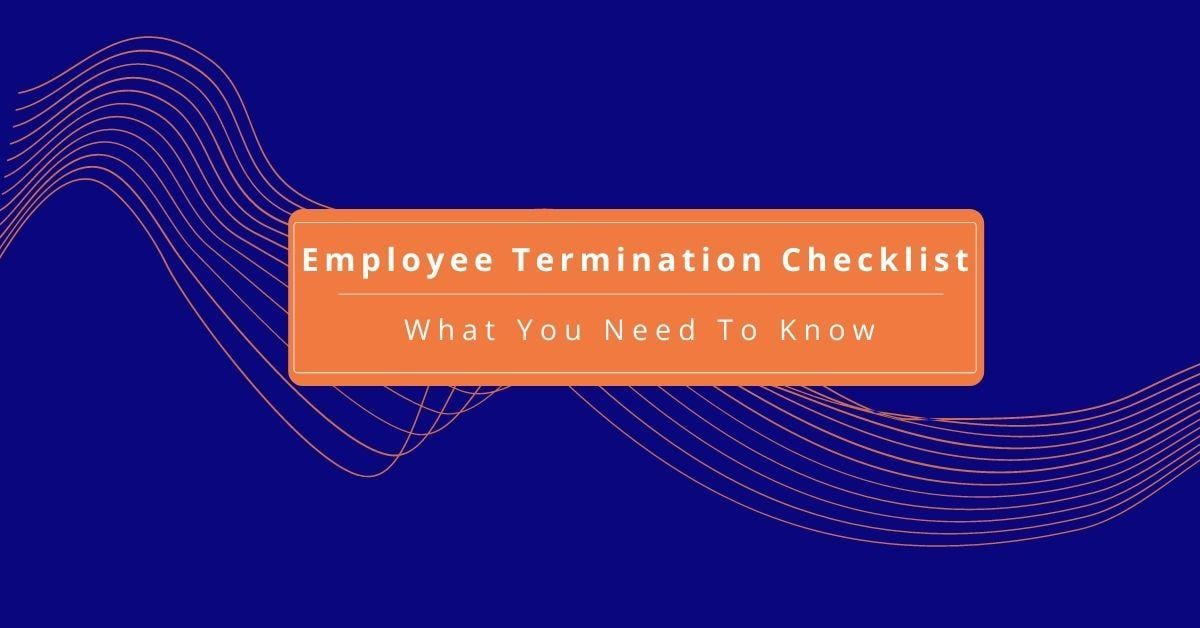Starting a new job with a new company can be overwhelming and intimidating.
There are many new people to meet, information to gather, and policies to learn.
Key Takeaways You Will Get From This Article
1. Employee Handbooks outline things like employment policies and benefits policies and are meant to welcome new employees and showcase company culture and core values.
2. When creating an employee handbook, write in a conversational style and begin with your vision, mission, and values.
3. Always include a description of your company culture, workplace policies and procedures, training benefits, company expectations, and onboarding information.
4. Creating and sharing your employee handbook is essential for the overall hiring process. In addition, it establishes a structured and fair atmosphere.
But, providing your new hires with an employee handbook on their first day is a great way to make sure they have all of the necessary information.
Employees can constantly refer to an employee manual if they have any questions later on.
Employee handbooks are an essential part of a hiring package.
They include everything from necessary legal statements to the dress code, vacation time, company policies, and your company's core values.
A good handbook from your human resources department will also outline employment expectations, relate your corporate vision, define benefit packages, and discuss disciplinary procedures.
In the article below, we will discuss creating an employee handbook.
Table of Contents:
- Why Do Companies Need Employee Handbooks?
- How to Create A Handbook That Will Get Read
- What Needs To Be In An Employee Handbook?
Why Do Companies Need Employee Handbooks?
Employee Handbooks outline things like employment policies and benefits policies and are meant to welcome new employees and showcase company culture and core values.
You should start new employment relationships with clear expectations and well-communicated company policies.
Benefits of an Employee Handbook include:
- Legal Protection. Employee handbooks serve as legal protection for your company. They describe the employment relationship and discuss time off policies, reasons for termination, sexual harassment and discrimination policies, complaint procedures, and other employment laws.
- Highlight the benefits packages. Your handbook should detail health insurance, 401K plans, retirement plans, paid time off, holiday pay, disability insurance, etc. Employees should also k ow when their benefits take effect.
- Save time. You should welcome all new employees to your company and introduce them to your team. Your employee handbook will explain everything in detail and give them something to refer to if they have questions.
- Unify your managers. Employee manuals should also be a good reference for your managers. Handbooks will allow your managers to clearly explain company rules and employee policies like vacation policies, allowing consistency across departments.
- Define expectations. Immediately after hiring them, you don't want to harp on everything your new employee can't do or spend all your time talking about the disciplinary process. Your employee handbook will allow you to start communications in a positive tone, and you can leave things like the hygiene and dress codes, social media and computer use restrictions, drug and alcohol policies, and complaint procedures to the handbook.
How to Create a Handbook That Will Get Read

Employee handbooks are never must-reads. No one gets excited to read them.
But your employee manual doesn’t need to be boring and dry. You’re creating a training manual for how people should operate within your small business, so it must get read.
Here are six ways to make sure your employees make it past page one.
1. Open With Your Vision, Mission, and Values
Set the stage right away for your employees to get the bigger picture of your business.
These sections should help your employees feel they’re more than just their employee number.
2. Write it in a Conversational Style
Most people will never read a robotic writing style mixed with jargon-speak.
Write your handbook the same way you would talk to your employees.
Be positive, upbeat, and professional.
Your handbook is a go-forward guide for your business to put its best proverbial foot forward, so it needs to be read.
You don't need to be dull or stiff to be professional.
3. Focus on the Perks

The first thing anyone will tell you about their new job is the cool job perks. Front-load the benefits page with your perks and vacation policy.
You can also showcase images throughout the manual that show a positive workplace culture.
4. Consider the Packaging and Presentation
If you have the budget and some creativity, you can have fun with a document that’s known for being dry.
Think creatively about creating an employee handbook that will inform your employees and make them want to read it.
It should make them feel good about choosing you as their employer.
If you don't have the budget for fancy, interactive graphics, just ensure your manual outlines your values and policies in conversational, plain speak.
5. Format Properly
Everyone is used to being bombarded by large amounts of information every day.
People prefer to read documents with section headers, breaks, bullets, and brevity. Huge chunks of text are overwhelming and are almost always skipped.
Make sure your manual is visually appealing to the skimming eye.
6. Be Fair and Consistent
When your manual is done, be sure to practice what you preach.
Treat all employees equally with compassion and fairness, and be consistent in your actions.
A handbook will lose all of its meaning if what's inside of it isn't backed up by management.
What Needs to be in an Employee Handbook?

The information included in your handbook will depend on the size of your company, your industry, and the tone or style you choose to use.
But, there are certain things that every company should include in their employee handbook.
Things like a description of your company culture, workplace policies and procedures, training benefits, company expectations, and onboarding information should all be inside.
Take a Look at Who Your Company is
Every handbook should include:
- The Company Culture
- Company Values
- A Clear Mission Statement
These things help establish what sets your company apart and why employees should want to work for you.
Your Company’s Policies and Procedures
Almost every company will include:
- General employment information and policies
- Code of Conduct
- Discrimination, bullying, and harassment policies
- Grievance procedures
- Social media policies
- Retirement benefits
- Health and safety policies
- Employee benefits, bonus schemes, reward and recognition programs
- Leave policies and procedures
- Conflict resolution policy
- Performance review process
- Performance standards
- Training and development opportunities
- Disciplinary, termination, and redundancy policies
- Confidential information, privacy and internet, and email policies
- Use of Company property policy
Outline Company Expectations
Most employee handbooks also have a section about your company's expectations for its employees.
Your employees should know what type of performance you expect or if there is a specific attitude or behavior your company should exemplify.
Layout your company's expectations for its employees as early as you can.
Also, include any relevant information about what your employees should expect from your company.
Include things like continuing education offers, experience employees can gain, and specific help available at your company.
Include Key Onboarding Information

Employees will likely refer to the employee handbook during the onboarding process more than any other point during employment.
Ensure employees can easily access information related to the onboarding process.
Include everything they need to know about signing up for benefits, connecting with the HR department, or learning more about how to perform their jobs in the manual.
Some employee handbooks contain critical training information to help employees do their jobs more effectively.
Keep Improving Your Business
Creating and sharing your employee handbook is essential for the overall hiring process. In addition, it establishes a structured and fair atmosphere.
If you want to continue upgrading and improving your business, you need the very best payment processing solutions.
Electronic Merchant Systems (EMS) offers all of the merchant services your business could possibly need, from robust POS systems to quick and convenient mobile payment options.
With EMS, you get:
- The top payment processing tools and opportunities
- Improved cash flow
- eCommerce, email invoicing, contactless payment options
- Exceptional credit card rates
- Minimized exposure to fraud losses
If these benefits seem valuable to your business, click below to speak with one of our payment experts today.






